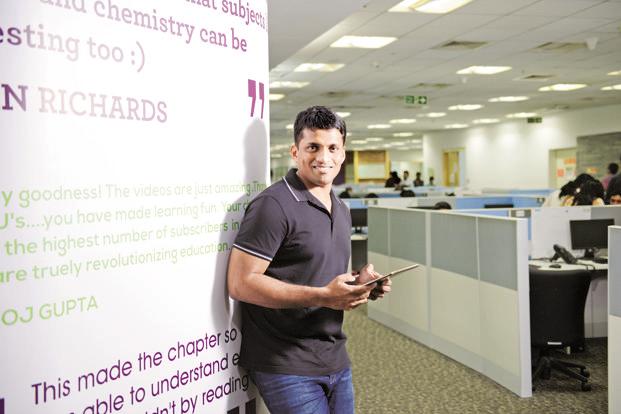
Education technology is becoming a global phenomenon, and as distribution and platforms scale internationally. The market is projected to grow at a rate of 17.0% per annum, to reach $252bn by 2020. The US has set the trend and pace of the global EduTech market, but Asia is where the action is unfolding: it is now experiencing the world’s fastest growth in investment into the sector. Mobile penetration, particularly smartphones, are and will continue to be a game-changer towards delivering and supporting learning and driving growth. A report released by EdTechXGlobal- in partnership with IBIS capital- states that North America, Europe and the Commonwealth nations lead in internet and mobile penetration, while substantial growth is expected in markets of developing countries as well.
Table of Contents
Population growth will be a key challenge- and stimulant- for the EdTech sector. By 2035, there are expected to be 2.7bn students worldwide. We will not be able to meet the demand for higher education under the current structure, because there aren’t enough universities to accommodate the potential number of students. But integrating technology into this industry removes the need for a physical space where children (or adults) can learn, and considering the amount of capital that is being funneled into this sector, investors are paying close attention- and taking action.
$8.15 billion; that’s the amount global investors have put into edutech companies during the first 10 months of 2017. In 2016, global investments in Chinese edutech companies rose to $1.2 billion, according to Goldman Sachs. Going forward, the edutech industry in China is expected to grow 20 percent annually, while a joint report released by Google and KPMG estimates that India’s online education market will rise by more than $1.96 billion over the next four years. The entire Asia-Pacific region is projected to represent 54 percent of the global edutech market by 2020. The Asian education system is the biggest in the world. More than 600 million students are enrolled in K-12 schools in Asia. Key foreign players are coming into the market and funneling capital into the region to support the growth of edutech, from Goldman Sachs to Times Internet. Mark Zuckerberg’s investment fund, the Chan Zuckerberg Initiative (CZI), for instance, is making edutech one of its priorities.

India’s population of 356 million young people have enticed several players into the game. But none have been more successful than Byju’s, India’s most popular online educational specialist. The company raised an undisclosed amount in March from Belgian family office Verlinvest, just three months after closing its last round. The Sequoia-backed startup has also raised around $170 million over the past year. Furthermore, the Bangalore-based ed-tech firm’s success story was recently selected as a Harvard Business School case study. So how exactly did Byju Raveendran start and build his company to become the giant that it is today?
Raveendran, who was working as an engineer for a UK based shipping company was approached by some of his friends in IIT to help them prepare for the CAT (Common Admissions Test). He helped them out and then decided to write the test himself, to see how he would do and ended up scoring in the 100 percentile. Despite getting calls from some of the best management institutes in India, he turned them down in favour of continuing with his job. Raveendran continued to conduct informal classes for friends that needed help and when he saw the difference he was able to make, he decided to take six months off and teach with a structure.
Raveendran started conducting workshops over the weekends, and the classes grew in popularity. So much so, that when one classroom wasn’t big enough to accommodate all his students, he booked an auditorium with 1200 seating capacity! And has filled several auditoriums since. Students from across the country came to Bangalore to attend his classes, so he decided to take the classes to them. From 2007 to 2009, he travelled to nine cities across the country. Several of his old students joined him along the way after completing their degrees at management schools and this small team of people helped him scale up the business and expand into the video format, where most of the lessons offered were conducted through this platform. In 2011, Byju’s was formally created.
Byju’s initial videos were all centered around test-preparation. They were much more low-key than the elaborate, high-production-value videos and content that it currently generates for the K-12 segment. They have more than 500 members in the research and development team. Content is what’s helping Byju’s accelerate growth and become one of the top education startups in the country. There are about 20 million children between Classes VI and XII in India who have access to the internet and take private coaching classes, which translates to a great market opportunity of about $2.5 billion, according to a research report by consulting firm RedSeer Consulting.
Interestingly, as much as 44% of total education-related searches are now coming from outside of the top six metros. There has been four-fold growth in the consumption of educational videos on YouTube in the last one year, the report added. By segment, re-skilling and online certification are the largest. In 2016, it was valued at $93 million and is expected to grow at a compounded annual growth rate (CAGR) of 38% to reach $463 million by 2021. Primary and secondary education has the largest addressable audience with a student base of around 260 million, making it the second-largest category. However, the report predicts that it will become the largest category by 2021, growing at a CAGR of 60% to reach $773 million. Test preparation, a small segment as of today, is likely to grow at an impressive CAGR of 64%, becoming a $515-million category over four years, the report estimated.

The main product of the company is the app called ‘BYJU’S-The Learning App’. Available for download on iOS and Android devices, the app was introduced in 2015. Apart from classes K-12, this app is used by students attempting exams like IAS, CAT, IIT-JEE, GRE and GMAT. The application has been designed and developed by a group of Alumni from IITs and IIMs, and have delivered results: these students have not only secured high ranks in the competitive examinations but also scored top marks in them. One in every 6 or 7 students gets calls from the Indian Institutes of Management. So what exactly does the app offer?

BYJU’s has exhibited substantial growth as far as revenue is concerned. The company started with a small capital of INR 2 lakhs and is now valued at over 120 crores. Their success is primarily because of the content that they create, but also because they have cracked the B2C model:
Byju now has his sights set on the overseas market, with investors like the Chan Zuckerberg Initiative backing him in this endeavour; they have invested $50 million to help with these expansion plans. And they have a good market to start with: almost 15% of their current students are from outside the country. As for plans on expanding within the country, they are focusing on adding more grades to the curriculum and incorporating lessons in other languages as well, which will open considerably more doors within the Indian market.
All around the world, students are learning differently. The scope for edutech is vast in the current digital age, with leaps and bounds in technology. It not only allows for better learning but also greater penetration through the internet. And while technology can never replace great teachers, in their hands, it can truly revolutionize the way the world learns.
Interested in Launching Your Own EdTech Platform like Byjus, Unacademy or EdX? Check out:
